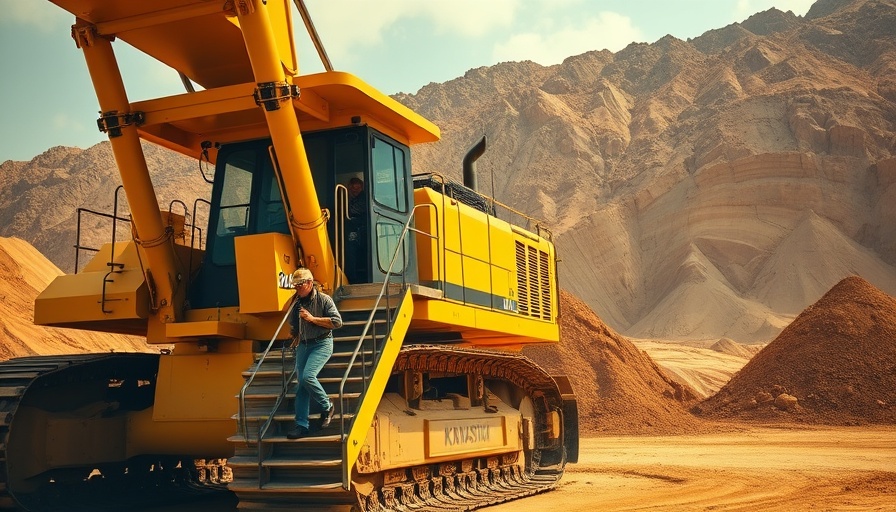
Komatsu's Behemoth: A New Era in Excavation
The construction industry is buzzing with excitement as Komatsu introduces its largest hydraulic excavator to date, the PC9000. This extraordinary machine, with a nearly 2-million-pound weight, is set to redefine mining operations around the globe. Suncor Energy marked its historic moment by becoming the first to utilize this colossal excavator at its Fort Hills oil sands mine in Alberta, Canada.
An 8,700-Mile Journey Across Continents
The journey of the PC9000 began at Komatsu’s manufacturing plant in Düsseldorf, Germany. Transported in 31 components, it embarked on an ambitious 8,700-mile journey involving meticulous logistics across various terrains. The components were initially loaded onto a barge on the Rhine River and traversed the North Sea, crossing the Atlantic Ocean and temporarily docking at the Port of Galveston, Texas. From there, they were transported via convoy to their final destination, where the real work began.
A Technical Marvel in Assembly
Upon arrival in Canada, the assembly of the PC9000 became a collaborative effort between SMS Equipment technicians and Komatsu engineers, taking approximately six weeks to complete. With cranes and aerial lifts working in unison, each intricate piece was bolted into place, culminating in a technologically advanced machine poised to revolutionize the industry.
Features That Set the PC9000 Apart
While specifics regarding the excavator's capabilities remain limited, one thing is certain: the PC9000 is designed to enhance productivity and safety in mining operations. Built on the successful platform of the PC8000, it benefits from improved performance metrics and operator comfort, a game-changer for those who spend long hours operating heavy machinery.
Transforming The Mining Landscape
Ansgar Thole, the managing director of Komatsu Germany, heralds the PC9000 as a catalyst for change in mining, stating, “This new class of hydraulic mining excavator raises the bar for productivity, efficiency, and performance, while enhancing operator comfort and safety.” As the excavator prepares for a commercial launch worldwide in 2026, the fully electric-drive option marks a substantial shift towards sustainable practices in construction.
Future Trends: What's Next for Heavy Equipment?
As we look ahead, the introduction of the PC9000 signals a growing trend towards larger and more efficient machinery in the heavy equipment sector. Innovations in electric-drive technology may reshape how these machines operate, making them not only more environmentally friendly but also more cost-effective for companies leveraging them in their operations. The increased emphasis on operator comfort and safety is also an indicator that manufacturers are keenly aware of the human aspect behind machinery.
Key Takeaways for Contractors
For contractors and key players in the construction and mining industries, the launch of the PC9000 is more than just an introduction of a powerful excavator; it represents a shift in how heavy equipment may shape project planning and implementation moving forward. The interplay between efficiency, safety, and technological advancement will be essential for each organization to harness the benefits offered by such machines.
In Conclusion: Why This Matters to You
The arrival of the PC9000 not only signifies an exciting leap in technology but also highlights the importance of innovation in an age where contractors must adapt to survival in an increasingly competitive landscape. Learning about advancements like these can inspire strategies that empower contractors to thrive in their operations.
 Add Row
Add Row  Add
Add 




Write A Comment